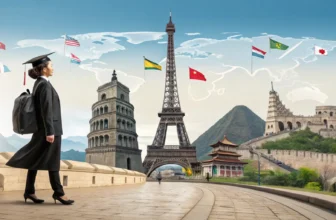
Some trips empty your wallet. Others fill your soul—and still leave gas money for the ride home. This article is about the latter. It’s for those of us who crave canyon sunrises, alpine air, and trails that don’t end at a price tag.
You don’t need to splurge on luxury lodges or overpriced basecamps to sleep near greatness. There are towns across the country where the cost of a night is less than your weekly grocery haul—and the payoff?
National parks are just minutes away. If you’ve ever dreamed of going big while living small, you’re exactly where you need to be.
1. Kanab, Utah
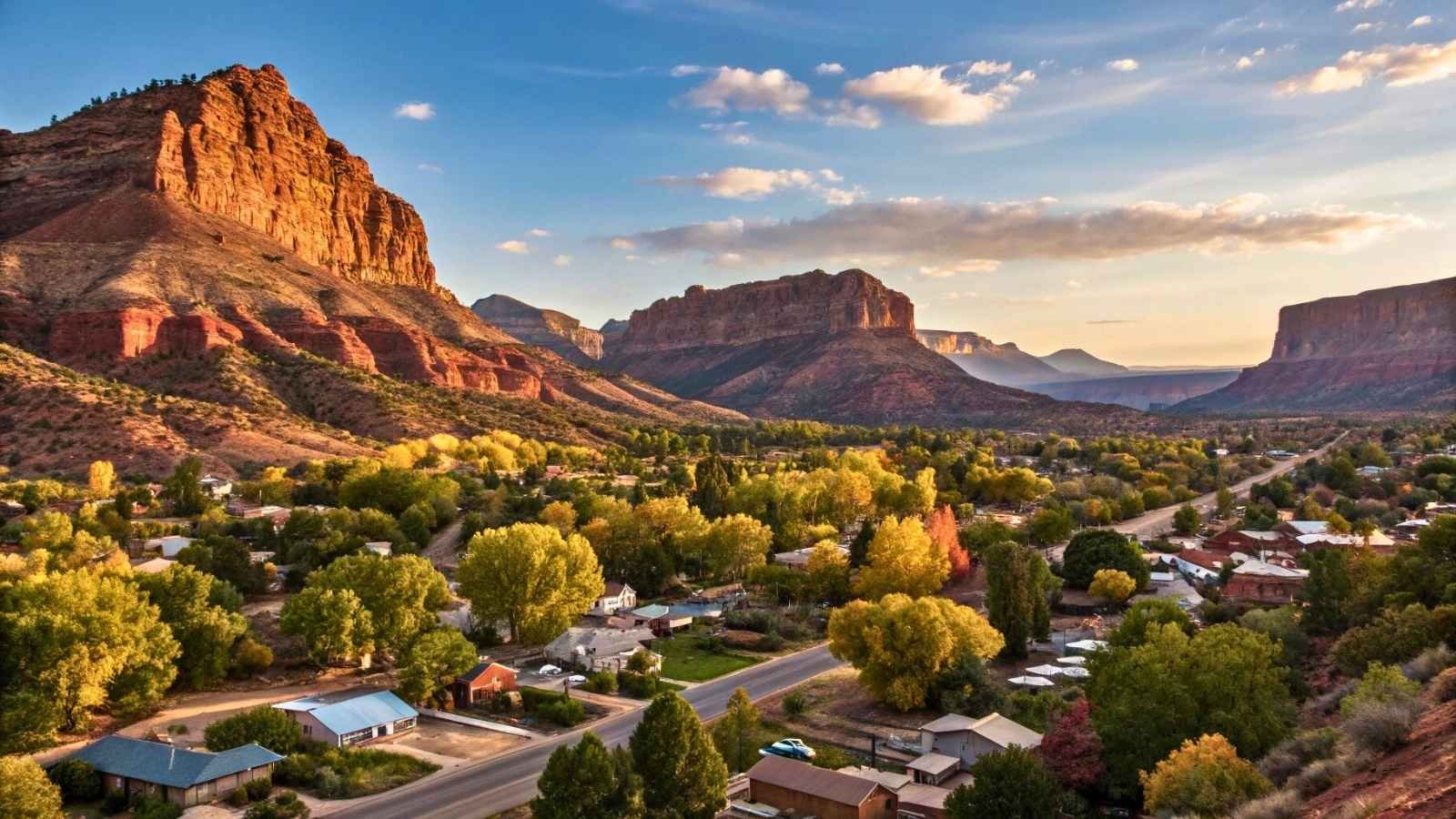
Gateway to Zion, Bryce Canyon, and Grand Staircase-Escalante
Nestled in southern Utah’s red-rock country, Kanab might be the most underrated adventure basecamp in the U.S. It’s got a quiet small-town vibe but sits in the epicenter of three of the most awe-inspiring parks in the country. Zion? Just an hour. Bryce? Even closer. Grand Staircase? Practically in your backyard. And the best part? You’ll find rooms, meals, and even longer stays here for a fraction of what you’d pay inside the parks.
What makes Kanab especially inviting isn’t just affordability—it’s the accessibility without crowds. You can hike sand caves in the morning, take a nap in your budget motel, and then walk in coral pink dunes by sunset. And while it doesn’t have big-city polish, it’s got personality—like the locally owned cafes, funky thrift shops, and that wild west movie history that still lingers in the air.
It’s also a town that lets you breathe—no hustle, no overpriced souvenirs, just real people and unreal landscapes. And if you’re lucky (or savvy), you might score a permit to hike The Wave—one of the most photogenic spots in the Southwest.
Need-to-Know for Kanab:
- Best Months to Visit: March–May, September–November (mild temps, fewer crowds)
- Where to Eat Cheap: Rocking V Café for a sit-down treat, Kanab Creek Bakery for an affordable breakfast
- Camping Options: Plenty of BLM land for free dispersed camping nearby
- Closest Parks: Zion (35 min), Bryce Canyon (1 hr 15 min), Grand Staircase (direct access)
- Bonus Tip: Visit Moqui Cave—funky, quirky, and only a few bucks to enter
2. Alamogordo, New Mexico

Gateway to White Sands National Park
If “surreal” had a ZIP code, it’d be Alamogordo. White Sands National Park lies just 15 minutes outside this humble southern New Mexico town—and trust me, the moment you step onto those gypsum dunes, it’s like walking on another planet. Yet the town itself? Surprisingly affordable, incredibly chill, and big enough to have everything you need without draining your travel fund.
Alamogordo doesn’t try to be flashy. You’ll find no-frills motels, mom-and-pop taco joints, and thrift stores with vintage Southwest flair. But that low-key charm is part of the appeal. It’s a place where $8 will buy you a good breakfast, and a day of exploring will cost you little more than sunscreen and snacks. Plus, with Holloman Air Force Base nearby, there’s a quirky mix of military families, desert wanderers, and photographers drawn to the white dunes.
Sunsets here are magic. That soft pink glow settling over pure white sand—it’s the kind of view that makes you stop talking and just stare. And you’ll be shocked how far your dollar stretches, especially when you realize a weekly Airbnb here can cost less than a weekend stay near other national parks.
Need-to-Know for Alamogordo:
- Best Months to Visit: October–April (avoid summer heat, still sunny and dry)
- Where to Eat Cheap: Hi-D-Ho Drive In for burgers; Rizo’s for authentic New Mexican
- Camping Options: Oliver Lee State Park, nearby, has cheap campsites with mountain views
- Closest Park: White Sands National Park (15 minutes)
- Bonus Tip: Try sand sledding—sled rentals at the visitor center are under $20
3. Pahrump, Nevada
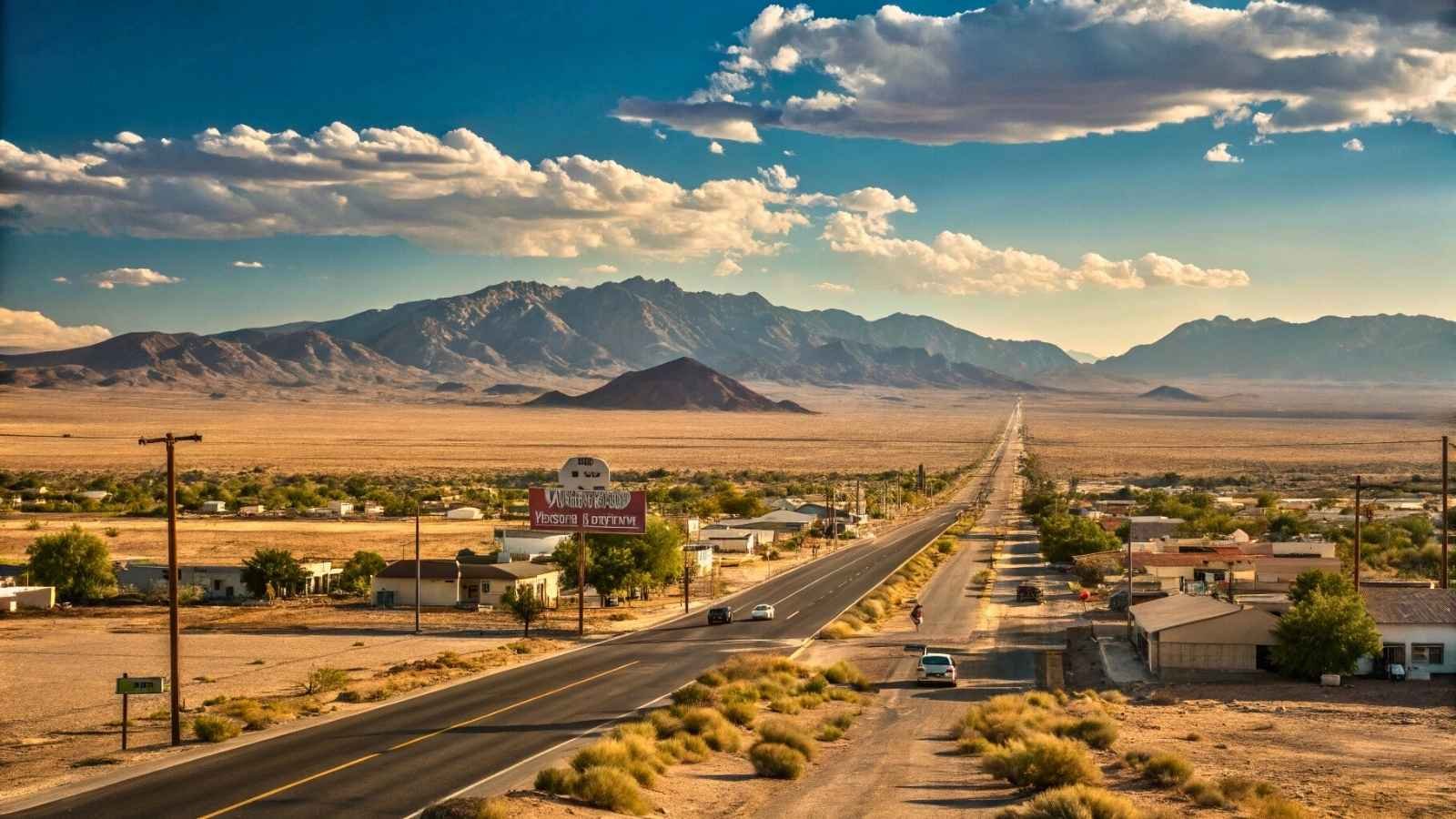
Gateway to Death Valley National Park
Let’s be honest—Death Valley gets a reputation for being, well, deathly hot. And it can be. But if you stay in Pahrump, you’re getting budget luxury in the desert without the pain of resort prices. Located about an hour from Furnace Creek, this quirky Nevada town is far enough to be affordable, close enough to be your ideal basecamp.
Pahrump has that offbeat Nevada vibe—slot machines in the gas stations, cheap buffets, and wide desert views that go on forever. But it also has real utility for the national park traveler: well-stocked grocery stores, low-cost motels, and even vineyards (yes, vineyards in the desert!). And unlike the pricey, often booked-up Furnace Creek options, you’ll get air-conditioned comfort for less than a night out back home.
What’s more, Pahrump lets you slow down. After a sunrise hike through Golden Canyon or Badwater Basin, you can come back, grab some tacos for $6, and cool off in a motel pool. It’s not a glamorous place, but it works, and your wallet will thank you.
Need-to-Know for Pahrump:
- Best Months to Visit: November–March (avoid extreme heat)
- Where to Eat Cheap: El Jefe’s for tacos; China Wok Buffet for a $10 meal pile
- Camping Options: Free camping just outside Death Valley in BLM areas
- Closest Park: Death Valley National Park (1 hour)
- Bonus Tip: Try the Pahrump Valley Winery—free tastings and beautiful views
4. Cortez, Colorado
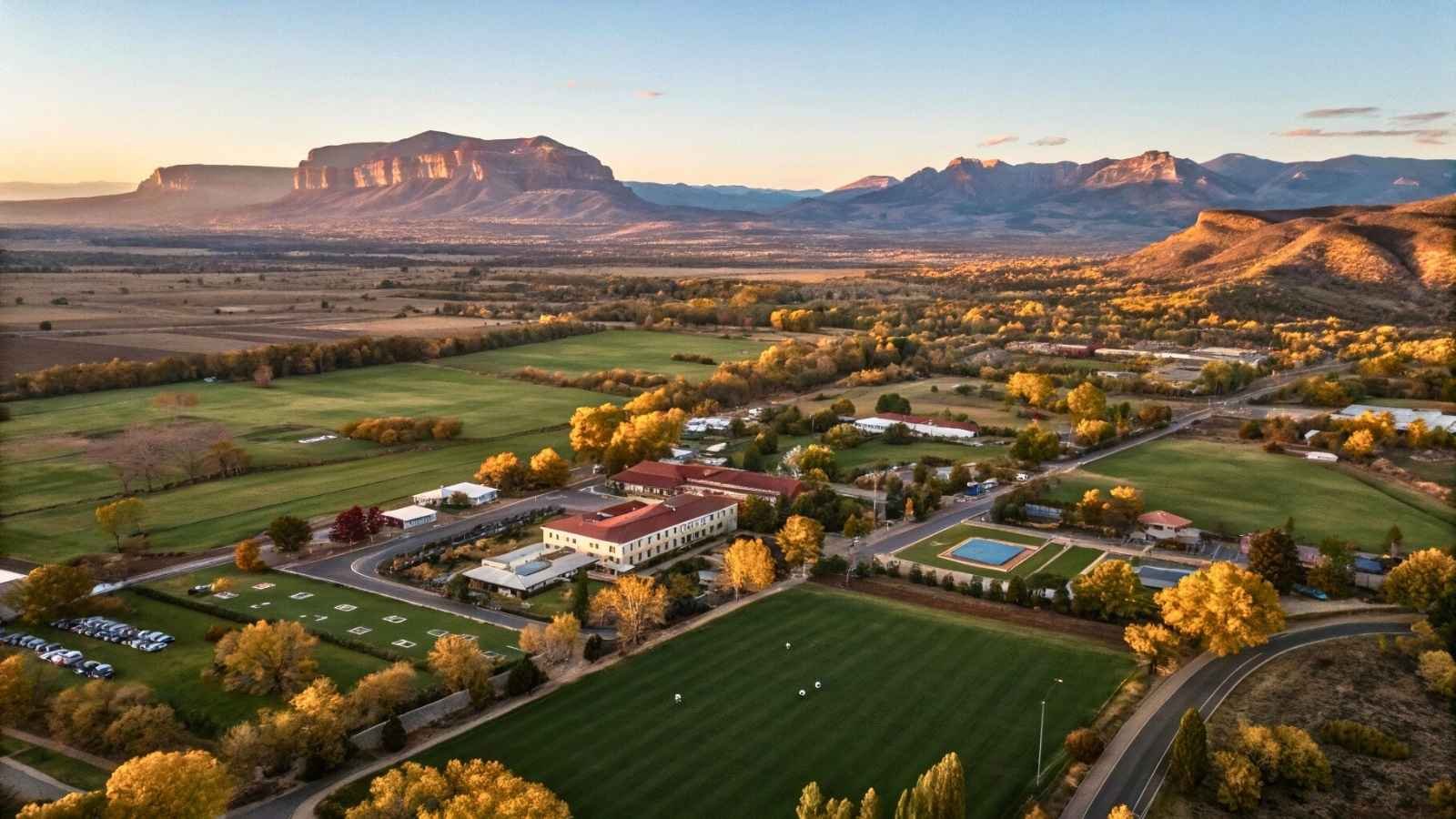
Gateway to Mesa Verde National Park
Tucked in the Four Corners region of Colorado, Cortez has the feel of an old railroad town with an artsy, down-to-earth streak. It’s affordable, scenic, and rich in ancient stories—mostly from the Ancestral Puebloans, whose cliff dwellings still cling to canyon walls in Mesa Verde. If you’re into history, hiking, and stretching your dollars, Cortez will hit the sweet spot.
Accommodations here range from modest roadside inns to campgrounds with panoramic views. Food? Think hearty burritos and green chile stew—often under $10 a plate. And while Mesa Verde is the main draw, you’re also a short drive from Canyons of the Ancients, Hovenweep, and more archaeological wonders. This makes Cortez a launchpad for a multi-park, budget-friendly cultural adventure.
Plus, it’s one of those places that surprises you. Walk Main Street and you’ll stumble upon a mural, a used bookstore, a vintage gas station turned into a diner. And you’ll barely spend more than you would on a night out in the city.
Need-to-Know for Cortez:
- Best Months to Visit: May–June, September–October (best weather, fewer visitors)
- Where to Eat Cheap: Blondie’s Trophy Room for local comfort food; La Casita for budget Mexican
- Camping Options: Mancos State Park and local RV parks, both affordable
- Closest Park: Mesa Verde National Park (15 minutes)
- Bonus Tip: Don’t skip the Chapin Mesa cliff dwellings tour—it’s one of the best in the Southwest
5. Escalante, Utah
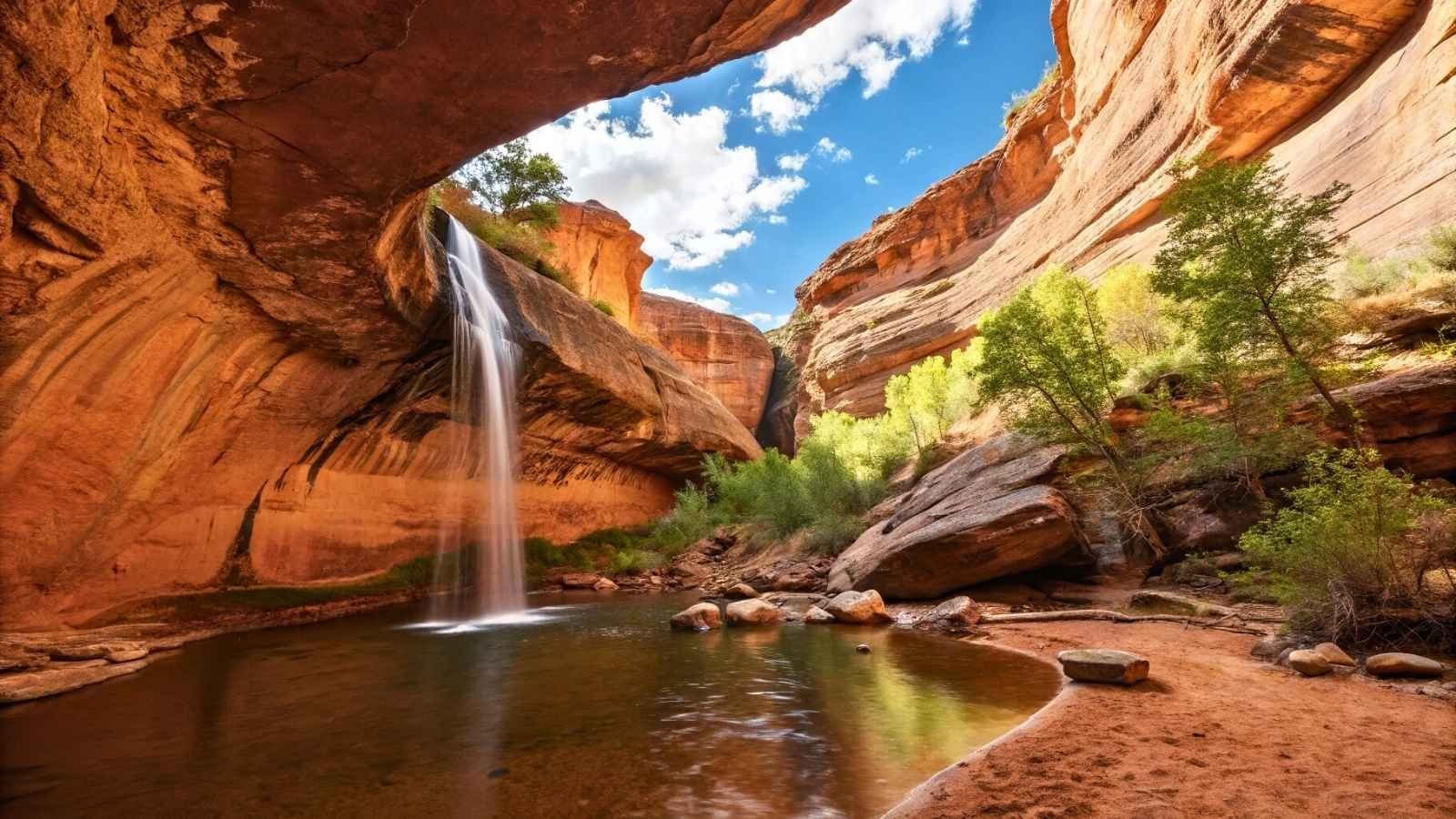
Gateway to Grand Staircase-Escalante and Capitol Reef
Driving into Escalante feels like entering a secret portal in the desert. Surrounded by slickrock, canyons, and hidden waterfalls, this tiny Utah town packs more wilderness access than most towns ten times its size. It’s remote, but that’s exactly why it’s cheap—and unforgettable.
If solitude is your thing, Escalante delivers in spades. The town itself is just a blip, but it’s loaded with backpacker energy—small diners, hiker hostels, and RV parks where everyone has a story to share. It’s also one of the last places in the U.S. where you can still roll up, find a free dispersed campsite within 10 minutes of town, and hike into a canyon without seeing another soul for hours.
The cost of living is low, the access is high, and the views are mind-blowing. Escalante doesn’t feel polished—but that’s the point. It’s the kind of place where a $5 slice of pie tastes better after a 10-mile hike through slot canyons and desert oases.
Need-to-Know for Escalante:
- Best Months to Visit: April–June, September–October (avoid monsoon season and summer heat)
- Where to Eat Cheap: Escalante Outfitters Café; Nemo’s for takeout and milkshakes
- Camping Options: Plenty of BLM land for free camping; Escalante Petrified Forest State Park for a small fee
- Closest Parks: Grand Staircase-Escalante (immediate access), Capitol Reef (1.5 hrs)
- Bonus Tip: Don’t miss the Lower Calf Creek Falls hike—worth every step
6. Haines, Alaska
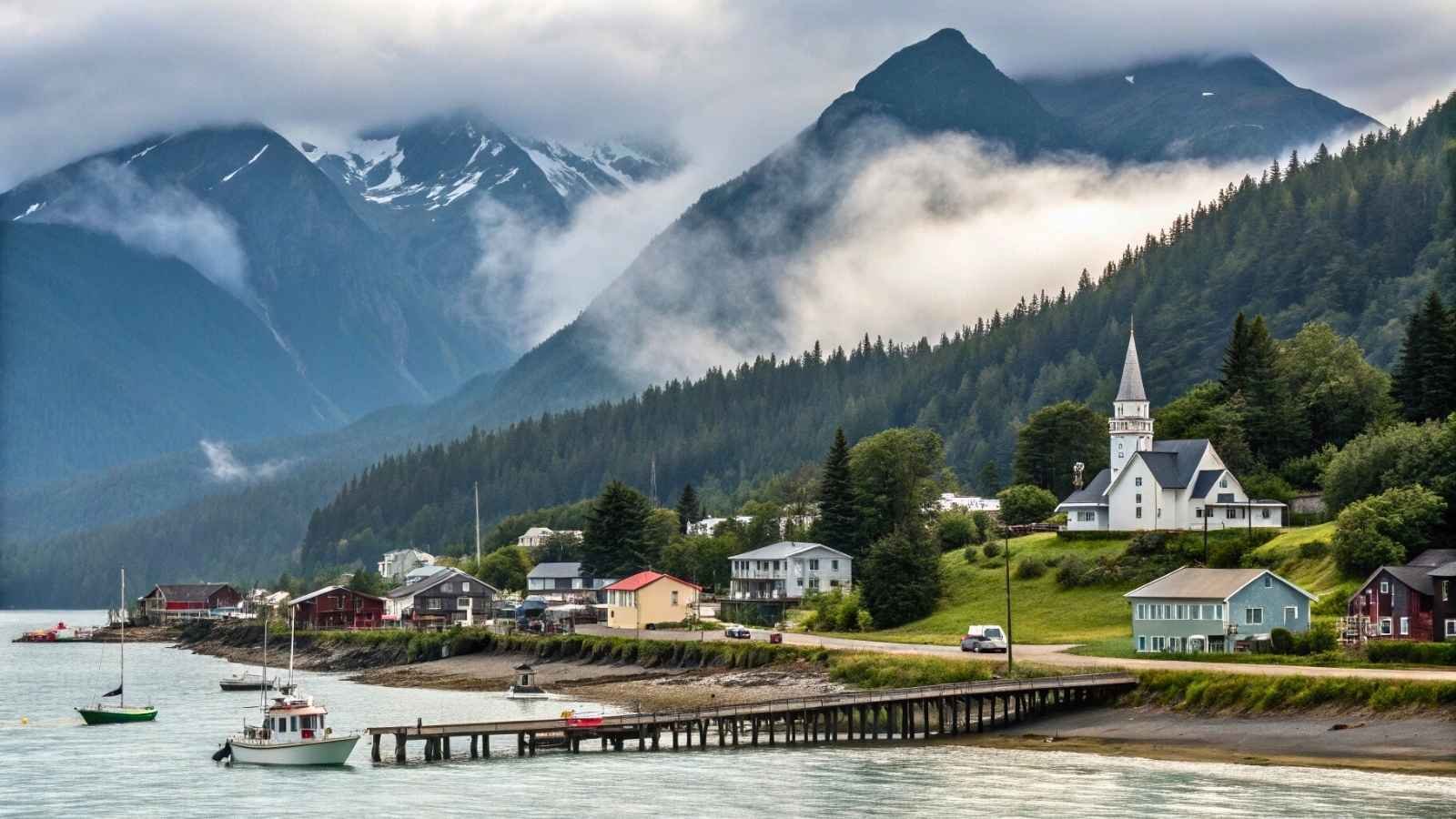
Gateway to Glacier Bay National Park
Haines might just be Alaska’s best-kept secret. Tucked between glacier-carved mountains and the ocean, this charming coastal town feels a world apart from the over-touristed cruise hubs. While Glacier Bay National Park is technically headquartered in Gustavus, most budget travelers find Haines a more affordable and authentic base, and it’s connected by road, unlike many Southeast Alaska towns.
Here, you get the full Alaskan experience: bald eagles soaring above, fishing boats pulling into harbor, locals sipping coffee in log cabin cafés. Lodging ranges from cozy cabins to budget inns, and you’ll find more reasonable prices than in nearby Skagway or Juneau. Plus, Haines is a perfect jumping-off point for kayaking, wildlife watching, and scenic drives along the Haines Highway—one of the most underrated road trips in North America.
And yes, it’s remote. But that’s the appeal. You’re not here for the nightlife—you’re here for the northern lights, glacier hikes, and the feeling that time slows down just for you.
Need-to-Know for Haines:
- Best Months to Visit: May–September (warmer temps, ferry access, bear sightings)
- Where to Eat Cheap: Fireweed Restaurant (great lunch specials), Mountain Market Café
- Camping Options: Chilkat State Park and Haines Hitch-Up RV Park
- Closest Park Access: Glacier Bay via ferry or charter from Haines
- Bonus Tip: Visit during the Alaska Bald Eagle Festival in November—truly wild
7. Torrey, Utah
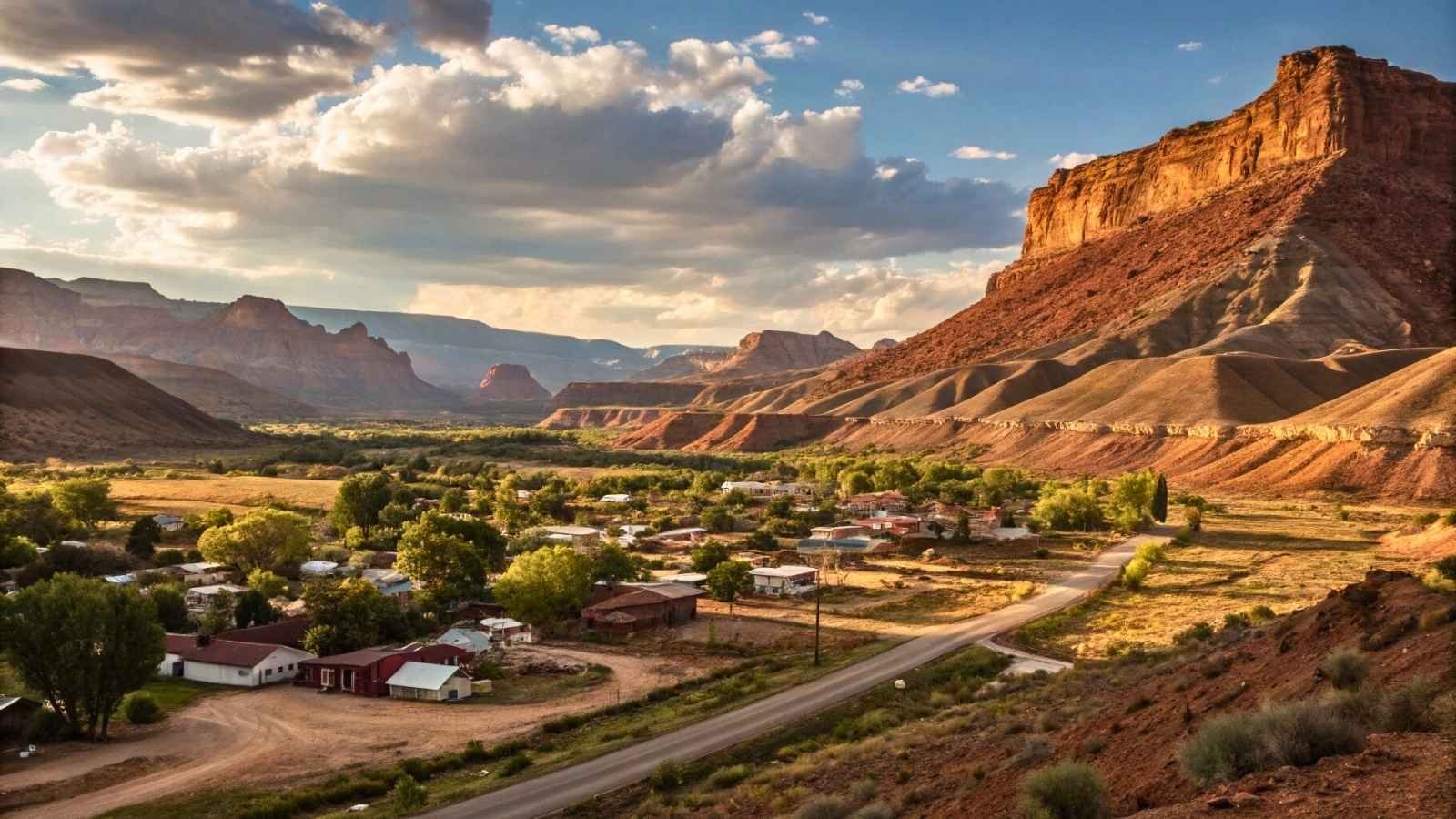
Gateway to Capitol Reef National Park
With a population under 300, Torrey is one of those blink-and-you-miss-it towns—but miss it, and you’re missing one of the most budget-friendly doorways to Utah’s red rock country. Sitting just minutes from Capitol Reef National Park, Torrey offers killer views, cheap motels, and a gateway to some of the most underrated trails in the state.
Unlike its flashier cousins near Zion or Arches, Capitol Reef remains relatively quiet—and so does Torrey. You can camp nearby for free or snag a motel room for the cost of a midweek grocery run. It’s a peaceful place, where the sunsets burn gold over slickrock cliffs and the town’s few restaurants still serve up meals at reasonable prices.
Even better? Capitol Reef’s Fruita area, with its historic orchards, free fruit-picking seasons, and riverside trails, adds charm to an already affordable adventure. Torrey lets you experience all of it—without draining your travel budget.
Need-to-Know for Torrey:
- Best Months to Visit: April–June, September–October (perfect hiking weather)
- Where to Eat Cheap: Slackers for burgers and shakes; The Rim Rock Patio for casual meals
- Camping Options: Tons of free BLM camping nearby; Fruita Campground in the park
- Closest Park: Capitol Reef National Park (10 minutes)
- Bonus Tip: Don’t skip the Cathedral Valley drive—remote, wild, and rarely crowded
8. Silver City, New Mexico
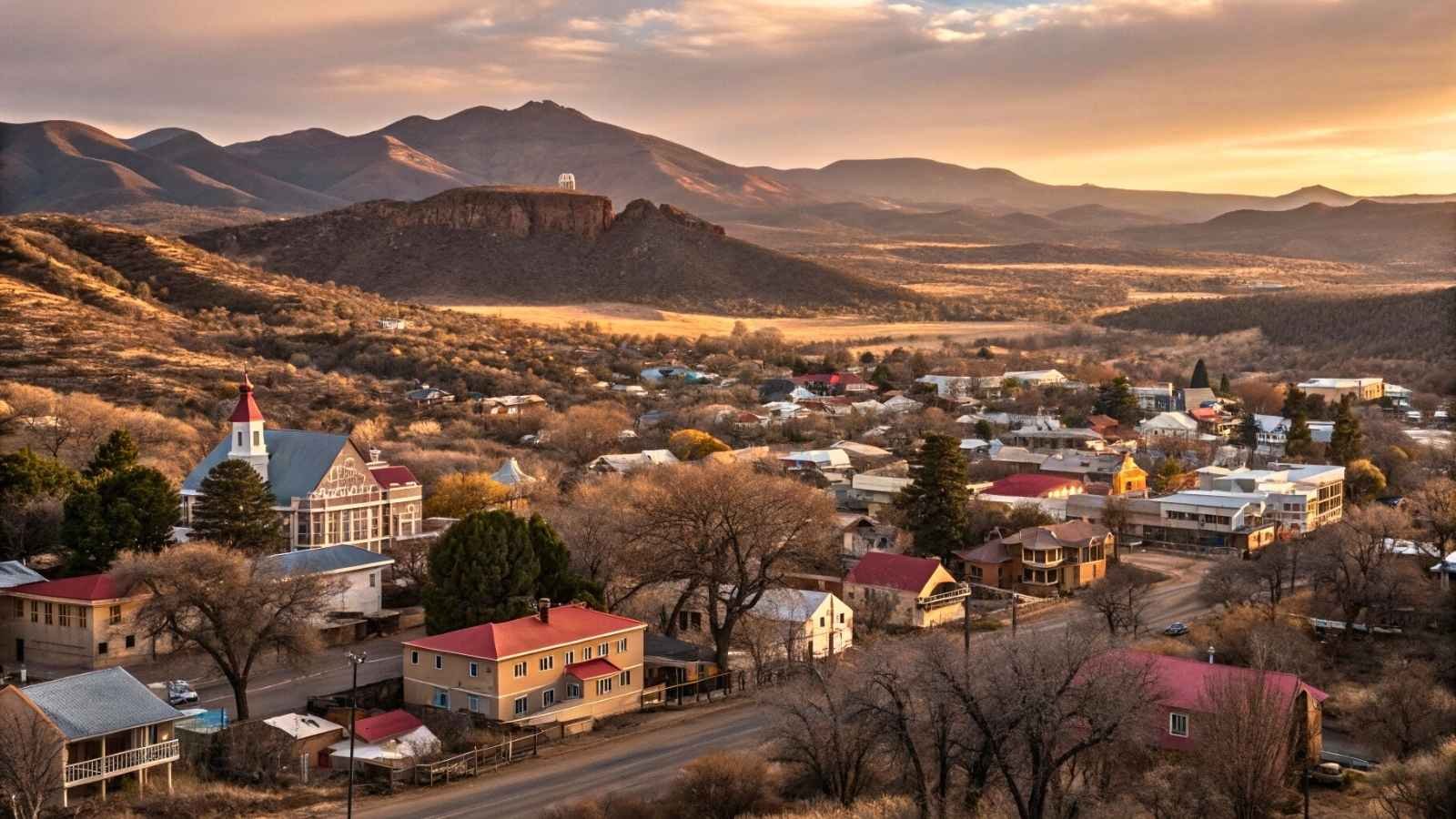
Gateway to Gila Cliff Dwellings National Monument
A little artsy, a little rugged, and a lot affordable, Silver City is one of those places where the cost of living hasn’t caught up with its charm. Set in the foothills of the Gila Wilderness, it’s the best base for exploring Gila Cliff Dwellings National Monument—a lesser-known but deeply fascinating national park unit filled with history, hot springs, and hiking trails.
The town itself is a mix of quirky galleries, affordable coffee shops, and frontier-era buildings. You won’t find luxury resorts here, but you will find hostels, local motels, and mom-and-pop diners that keep things comfortably within budget. And the drive from Silver to the monument? A winding, forested beauty filled with photo ops and hidden campgrounds.
What sets Silver City apart is its blend of culture and nature. You can walk a historic downtown in the morning, soak in natural hot springs in the afternoon, and still spend less than a movie night back home.
Need-to-Know for Silver City:
- Best Months to Visit: March–May, September–November (cooler temps, wildflowers in spring)
- Where to Eat Cheap: Jalisco Café for affordable Mexican; Diane’s for lunch specials
- Camping Options: Free dispersed camping in the Gila National Forest
- Closest Park Access: Gila Cliff Dwellings (2 hours via scenic mountain drive)
- Bonus Tip: Visit the Silver City Museum—it’s free and surprisingly fascinating
9. Beatty, Nevada

Gateway to Death Valley National Park
If you’re looking for the absolute cheapest launchpad into Death Valley, skip the lodges inside the park and head to Beatty, Nevada. This gritty little town sits just outside the northeast entrance and offers rock-bottom prices on motels, fuel, and meals. And let’s be honest—when the desert already feels like the surface of Mars, you don’t need fancy.
Beatty keeps things simple. There are old-school diners, retro neon signs, and an honest-to-goodness ghost town (Rhyolite) right next door. Rooms here regularly go for under $70 a night—even in high season—and there’s a Dollar General for stocking up on snacks and supplies before venturing into the park.
It’s not trying to be pretty. But it’s perfect if you’re prioritizing access and savings over aesthetics. And the proximity to Titus Canyon—one of the most scenic drives in Death Valley—makes it an ideal jumping-off point.
Need-to-Know for Beatty:
- Best Months to Visit: October–April (avoid dangerous summer temps)
- Where to Eat Cheap: Happy Burro Chili & Beer; Mel’s Diner for all-day breakfast
- Camping Options: Free camping just outside the park and at BLM pull-offs
- Closest Park Access: Death Valley National Park (8 miles)
- Bonus Tip: Check out Rhyolite Ghost Town—it’s spooky, photogenic, and free
10. Three Rivers, California
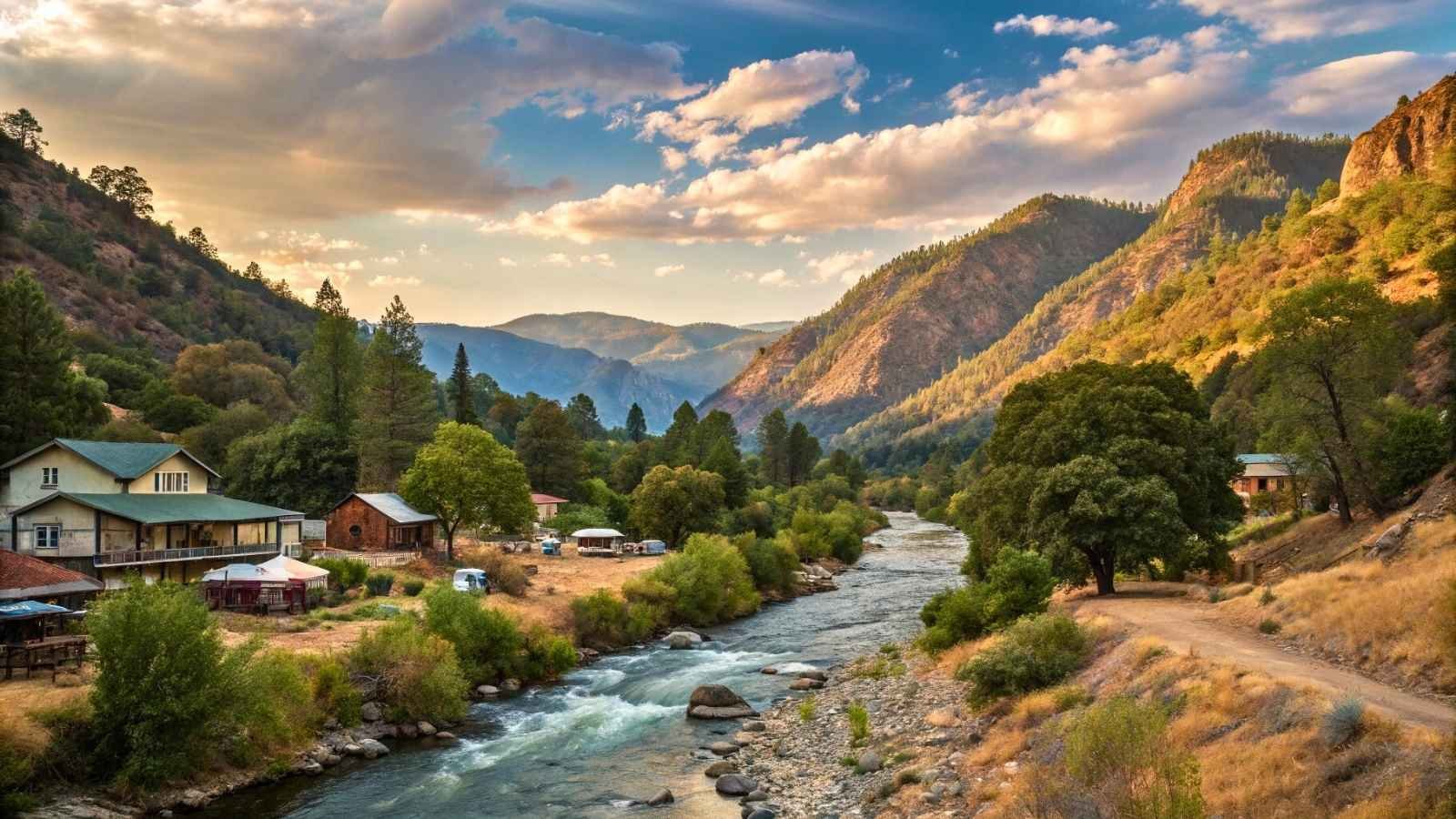
Gateway to Sequoia & Kings Canyon National Parks
At the base of the Sierra foothills, Three Rivers is the humble, budget-minded neighbor to California’s mighty Sequoias. Just minutes from the Ash Mountain entrance to Sequoia National Park, it offers budget motels, riverside campsites, and a quiet retreat that costs a fraction of staying inside the park.
It’s the kind of town where general stores double as gear shops, and the ice cream stand is a local institution. And while prices can spike in peak summer, you can still score affordable stays—especially if you camp or visit in spring or fall. You’ll be right at the edge of towering groves, alpine lakes, and deep canyons—without the Yosemite-level pricing.
Best of all? The South Fork of the Kaweah River runs right through town, making it the perfect place to cool off after a long day exploring giant sequoias. It’s not fancy—but if big trees and small bills are your thing, this is your spot.
Need-to-Know for Three Rivers:
- Best Months to Visit: May–June, September–October (less crowded, beautiful weather)
- Where to Eat Cheap: Sequoia Cider Mill Restaurant (great lunch specials); Sierra Subs & Salads
- Camping Options: Lake Kaweah campgrounds and free dispersed camping up nearby forest roads
- Closest Parks: Sequoia National Park (10 min), Kings Canyon (1 hour)
- Bonus Tip: Stop at Hospital Rock—free petroglyphs and picnic spots just inside the park
11. Gardiner, Montana
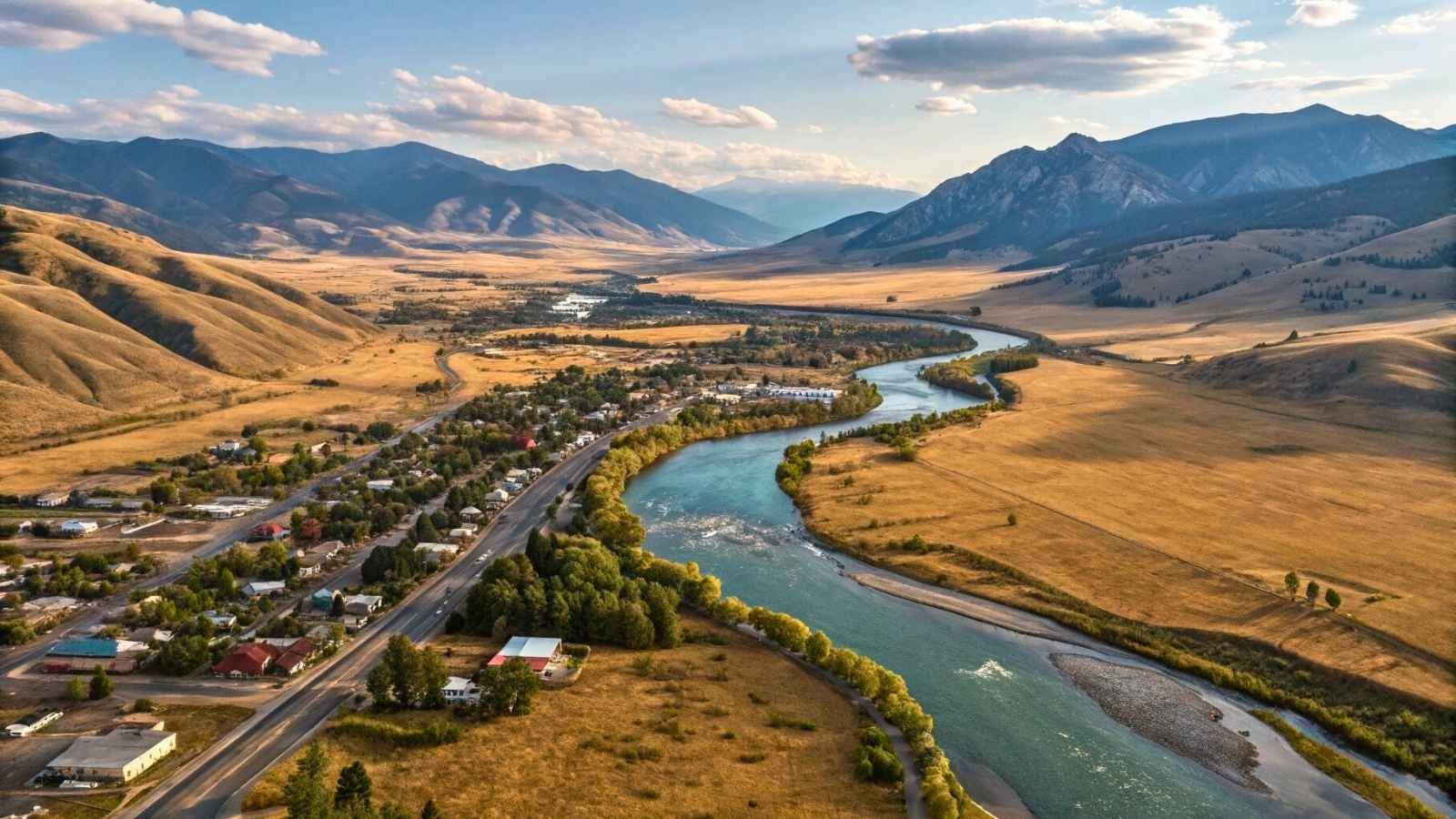
Gateway to Yellowstone National Park (North Entrance)
Gardiner is Yellowstone’s wild-card gateway town. While West Yellowstone is busier and Jackson Hole is pricier, Gardiner sits calmly just outside the park’s North Entrance, offering direct access to the famous Roosevelt Arch—and at far more wallet-friendly prices.
It’s small, rustic, and real. Elk roam the streets like locals, coffee shops have that worn-in charm, and accommodations range from simple motels to cozy cabins, often for under $100 a night. And unlike many park towns, Gardiner stays open year-round, making it perfect for off-season travel, especially if you’re into winter wildlife watching or soaking in the Boiling River.
There’s also something special about waking up with the park entrance just down the hill. You’re not battling lines or long drives—you’re already there. And if you’re lucky, you’ll spot bison crossing the road before your first cup of coffee.
Need-to-Know for Gardiner:
- Best Months to Visit: May–June, September–October (wildlife, mild weather, fewer crowds)
- Where to Eat Cheap: Yellowstone Pizza Company, Two Bit Saloon for classic pub grub
- Camping Options: Eagle Creek Campground (Forest Service), and park campgrounds nearby
- Closest Park Access: Yellowstone North Entrance (5 minutes)
- Bonus Tip: The Boiling River soak spot—natural hot springs in the river, free with park entry
12. Tropic, Utah
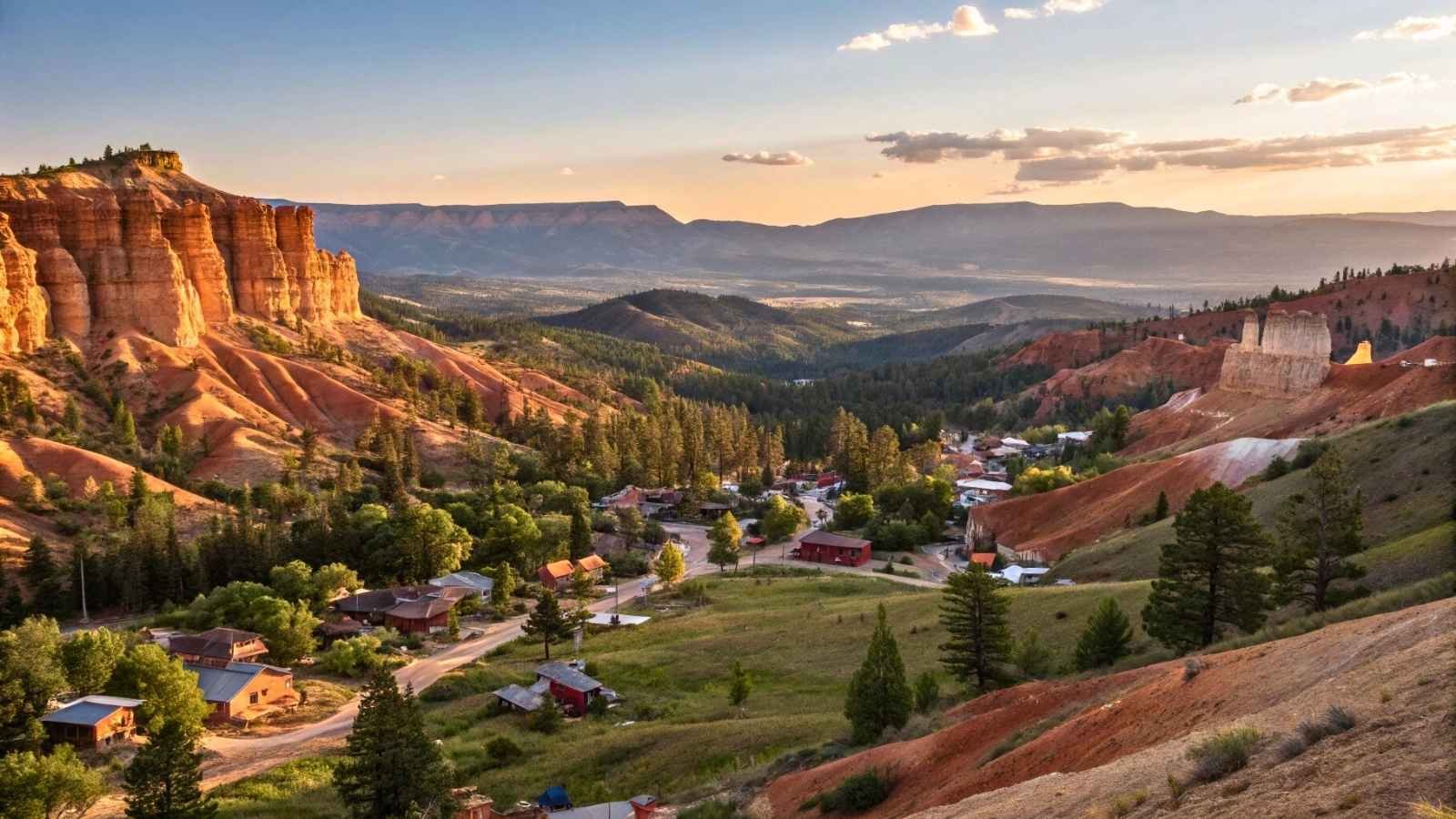
Gateway to Bryce Canyon National Park
Tropic might sound like a beach town, but it’s all red rocks and starry skies here. Just 15 minutes from Bryce Canyon National Park, this sleepy hamlet is a dream basecamp if you want to stay close to the hoodoos without paying hoodoo-level prices.
What’s great about Tropic is its unpretentiousness. You won’t find crowds or corporate hotels—just affordable inns, farmhouse cafés, and B&Bs run by folks who know the land like the back of their hand. It’s quieter and cheaper than Bryce or even Panguitch, yet close enough that you can catch the sunrise from Sunrise Point and be back in town for breakfast.
And that Bryce Canyon magic? It’s even better when you’re not stressed about lodging costs. Tropic keeps things simple and scenic—just how it should be.
Need-to-Know for Tropic:
- Best Months to Visit: May–June, September–October (cooler temps, vibrant skies)
- Where to Eat Cheap: Clarke’s Restaurant; The Pizza Place (yes, that’s its real name)
- Camping Options: Bryce Pioneer Village Campground; dispersed camping nearby
- Closest Park: Bryce Canyon National Park (15 minutes)
- Bonus Tip: The Mossy Cave trail—easy, beautiful, and starts right outside town
13. Munising, Michigan
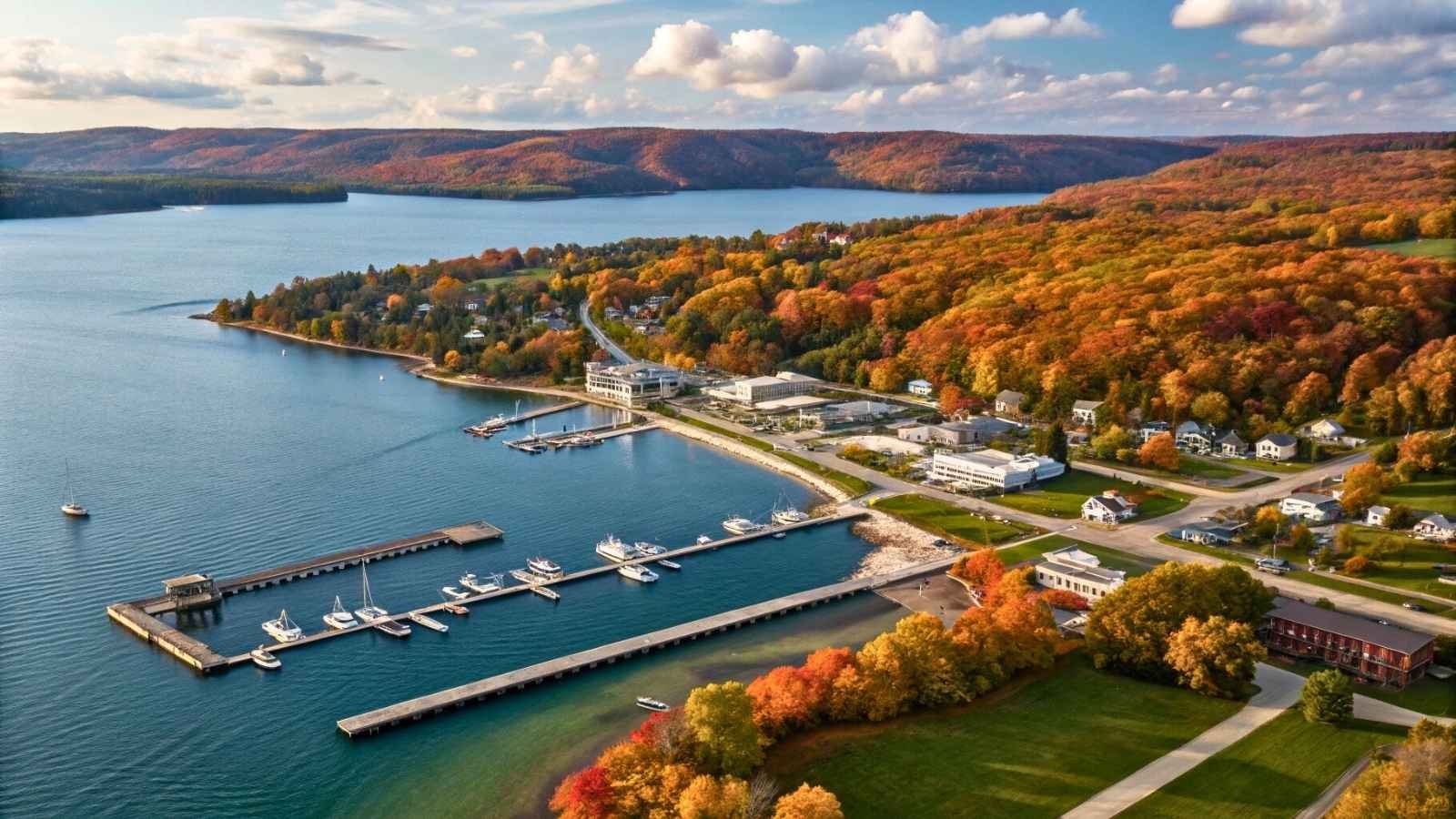
Gateway to Pictured Rocks National Lakeshore
Welcome to the Northwoods, where costs are low and colors are high. Munising is a laid-back Upper Peninsula town on the shores of Lake Superior, and it’s your go-to hub for exploring the jaw-dropping cliffs, beaches, and waterfalls of Pictured Rocks National Lakeshore.
This place has a completely different vibe from the Southwest or mountain towns—think pine forests, shipwreck tours, and cherry pie at roadside diners. Motels, cabins, and Airbnb stays here are wonderfully budget-friendly, especially if you visit outside of July and August. And the scenery? Pure Michigan magic.
If you’ve never kayaked under sandstone cliffs or watched the Northern Lights from a lakeside campfire, Munising might just win you over. And it’s a far cry from overpriced, overcrowded park towns. You’re paying small-town prices for big-lake beauty.
Need-to-Know for Munising:
- Best Months to Visit: June–October (especially September for fall colors)
- Where to Eat Cheap: Muldoon’s Pasties; Falling Rock Café & Bookstore
- Camping Options: Munising Tourist Park Campground; Hiawatha National Forest sites
- Closest Park: Pictured Rocks National Lakeshore (5–10 minutes)
- Bonus Tip: Take the sunset boat cruise—the best way to see the cliffs
14. Forks, Washington
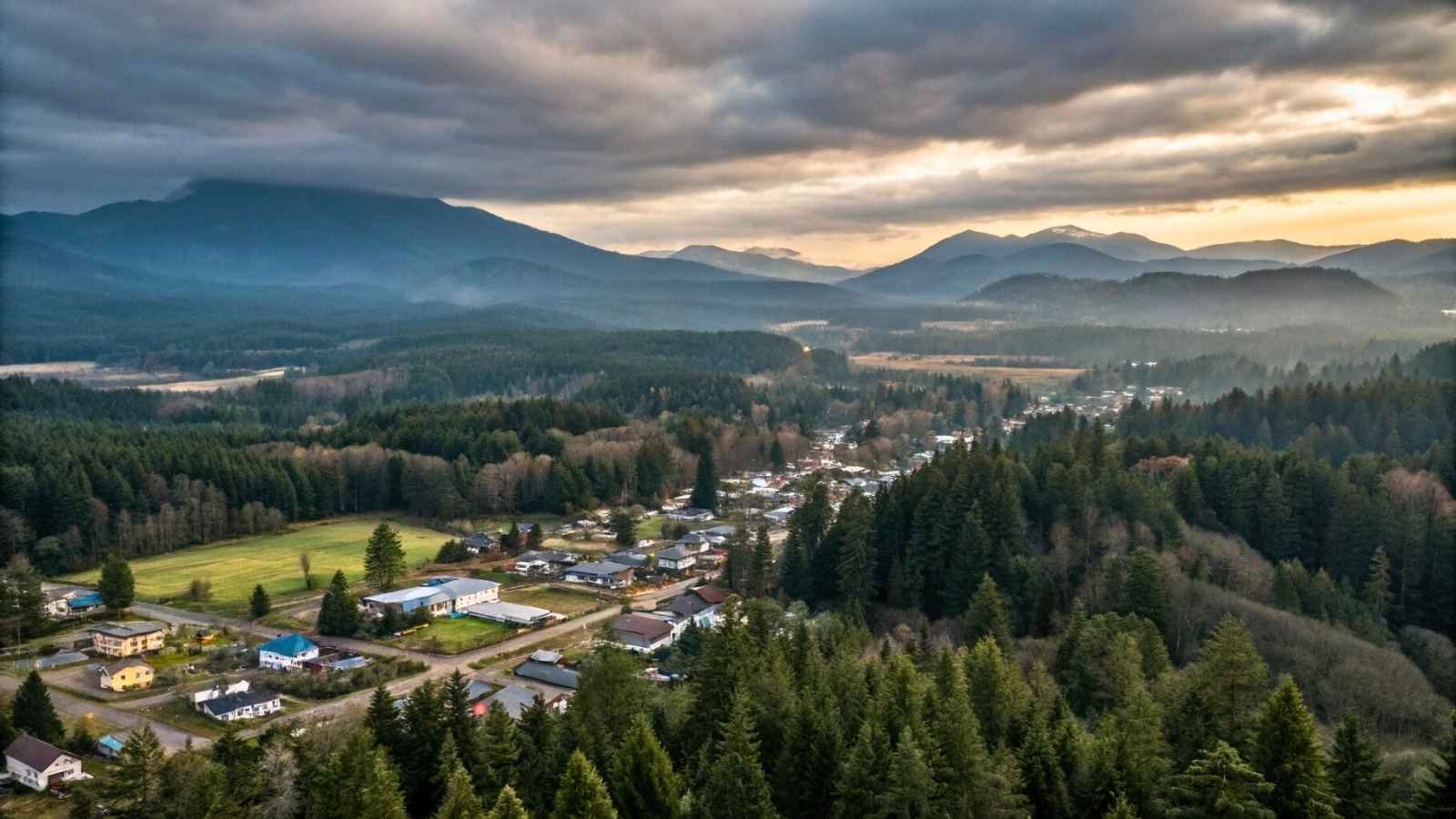
Gateway to Olympic National Park
Yes, that Forks—famous for vampires and moody weather. But beyond the Twilight hype, this rainy little coastal town is one of the most affordable and diverse jumping-off points for Olympic National Park.
You’re less than an hour from beaches, rainforests, and alpine trails—a rare trifecta in one national park. Lodging in Forks is often way cheaper than trying to stay near Port Angeles or Lake Crescent, and you’ll find plenty of diners, groceries, and motels catering to hikers and road-trippers, not luxury tourists.
Plus, Forks is more than its pop-culture fame. It’s got a blue-collar heart, with real people, real weather, and real proximity to some of the wildest, greenest corners of the Pacific Northwest. You’ll leave muddy, happy, and probably planning your next trip back.
Need-to-Know for Forks:
- Best Months to Visit: May–September (drier, great for hiking and beach walks)
- Where to Eat Cheap: Pacific Pizza; Blake ‘slee’s Bar & Grill
- Camping Options: Bogachiel State Park; nearby Olympic National Park sites
- Closest Park Areas: Hoh Rainforest (45 min), Rialto Beach (30 min), Sol Duc (1 hour)
- Bonus Tip: Hit all three—beach, rainforest, and mountains—in one epic day
15. Joshua Tree, California
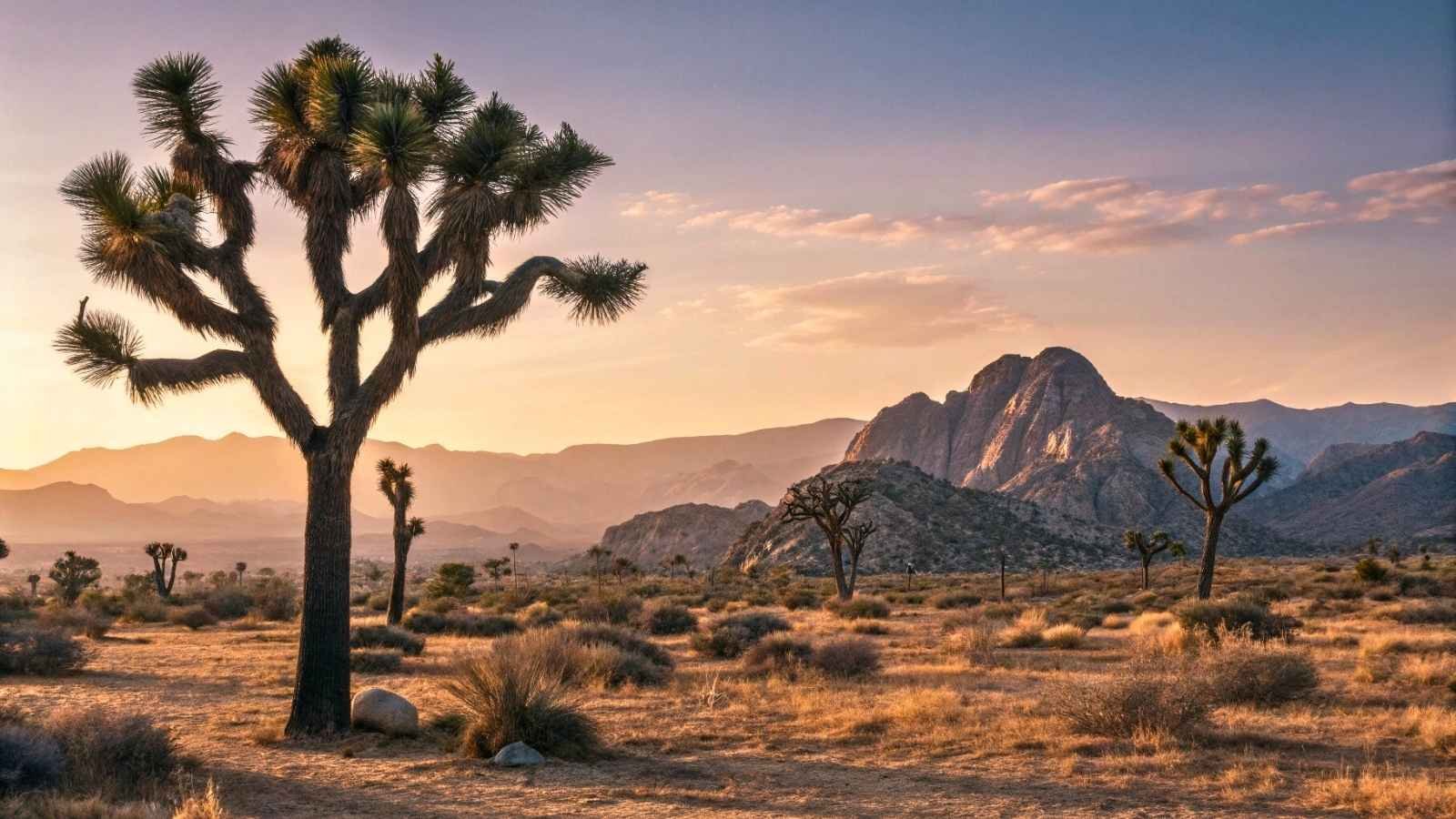
Gateway to Joshua Tree National Park
Last but not least, Joshua Tree town is a quirky, sun-bleached outpost at the edge of one of America’s most iconic parks. While Palm Springs gets the headlines—and the luxury price tags—Joshua Tree offers a far cheaper alternative with just as much access, plus boho art vibes and funky desert charm.
Think vintage trailers, retro diners, local art co-ops, and some of the cheapest desert lodging in Southern California (especially if you’re down to camp or go old-school motel). You’ll meet rock climbers, painters, stargazers, and desert wanderers—all drawn to this Martian landscape that turns gold at sunset.
And the best part? You can sleep cheap, eat well, and still walk into the park in the morning for sunrise over cholla cacti. It’s wild. It’s weird. And it’s way more affordable than it looks on Instagram.
Need-to-Know for Joshua Tree:
- Best Months to Visit: March–May, October–November (cooler temps, starry nights)
- Where to Eat Cheap: Crossroads Café, Country Kitchen for hearty breakfasts
- Camping Options: Indian Cove and BLM land just outside the park
- Closest Park Access: Joshua Tree National Park (direct access from town)
- Bonus Tip: Hit the Joshua Tree Farmers Market on Saturdays for snacks and souvenirs


